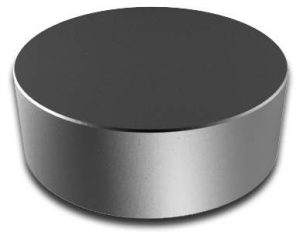
Magnets are a vital tool for countless businesses. Manufacturing companies, for instance, use them to remove metal waste from workpieces, machines and the surrounding workspaces. A high-powered magnet will attract metal waste, making cleanup a breeze. Magnets can also be used for material handling purposes. Depending on the type, some high-powered magnets are capable of lifting hundreds of pounds.
When shopping for magnets, though, you come across some unfamiliar terms, one of which is “reach out.” Unless you’re familiar with industrial magnets, you might be wondering what it means.
Overview of ‘Reach Out’
The phrase “reach out” refers to the maximum distance at which a magnet’s magnetic field will reach. Magnets, of course, are defined by their ability to produce a magnetic field. Magnetic fields are an invisible force that attracts ferromagnetic materials — iron, cobalt, magnetite, etc. — while simultaneously repelling other magnets. The strength of a magnet’s magnetic field, however, is influenced by its distance to other materials or magnets.
The closer a magnet is to a ferromagnetic material, the stronger its magnetic field will be. “Reach out” is a measurement of how far this magnetic field can reach. As long as a ferromagnetic material is within the “reach out,” it will be attracted to the magnet. Once it exists the “reach out,” on the other hand” the ferromagnetic material will fail to pull itself towards the magnet.
Types of Magnets and How They Affect ‘Reach Out’
While all magnets produce a magnetic field, there are many different types of magnets, some of which have a longer “reach out” than others. Natural magnets, such as lodestone, typically have the shortest “reach out.” They produce a weaker magnetic field than other types of magnets, resulting in a shorter “reach out.”
Ceramic magnets also have a longer “reach out” than natural magnets. Consisting of ceramic material, they are both strong and resistant to corrosion. Neo magnets are among the strongest magnets, and they also tend to have the longest “reach out.” Short for neodymium, they are a type of rare-earth magnet. Neo magnets are made of alloy, neodymium and boron. They produce a particularly strong magnetic field that reaches farther than all other magnets.
In Conclusion
All magnets have a “reach out.” It’s essentially the maximum distance at which the magnetic field will reach. Natural magnets typically have the shortest “reach out,” followed by ceramic magnets. Neo magnets sit at the top of the list by extending their magnetic field the farthest.
